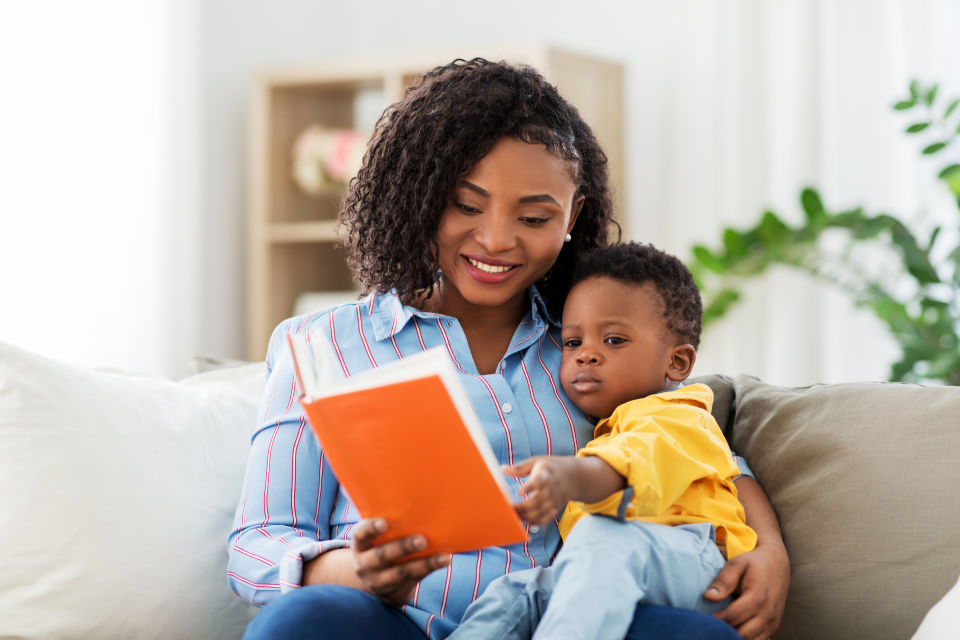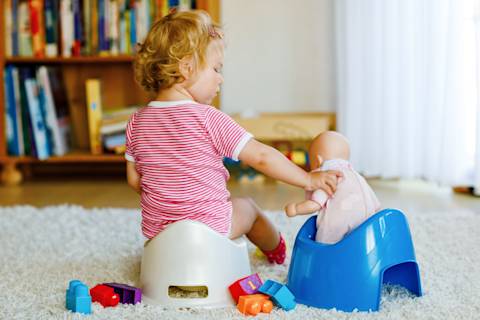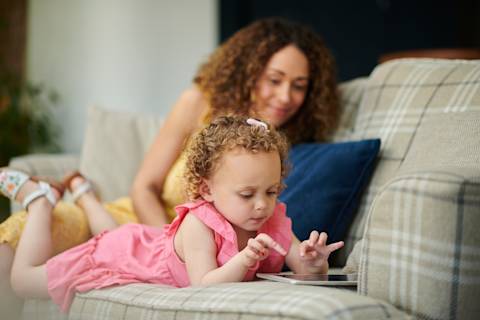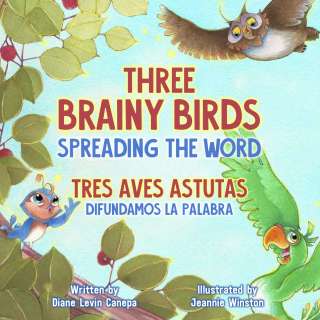Books are a powerful way to support your child’s social-emotional and behavioral development. Find out how and learn about some books that can get you started.

Reading with your child is an excellent way to build brain power and language development. But did you know that reading can also help with your child’s behavioral and social-emotional growth? Yes, reading really is that powerful!
Through books and stories, children can learn skills when they see characters handle emotions similar to those they experience themselves. Reading and hearing stories about emotions, interactions with friends and family, and ways to work through difficult situations is a positive and fun way for children to learn behavioral and social-emotional skills. So if your child throws their toys, read a story about a child who learns how to treat their toys nicely. Or when your preschooler is worried about going to kindergarten, read a story about what kindergarten is like and how another child also felt worried but had a great first day of school. Books are effective at helping children and parents learn and teach about appropriate behavioral expectations, social skills, and emotional experiences.
As children grow, they reach different reading, and writing, milestones. Keep in mind that kids develop at different speeds, and that’s okay. Here’s what you might expect:
Infancy (Up to Age 1): Babies start to understand that gestures and sounds communicate meaning. They will enjoy hearing the rhythm of your voice, focusing on pictures, and will often respond to stories and pictures by vocalizing and patting the pages.
Toddlers (Ages 1–3): Toddlers begin to answer your simple questions about pictures in books and can name familiar images—like, “Where is the dog?” or “What does a dog say?” They may often point to objects when prompted, pretend to read by mimicking adults, and enjoy turning the pages of board books. Many toddlers have favorite stories they love hearing over and over.
Early Preschool (Age 3): Children at this age explore books independently and listen to longer books when read aloud. They start to retell familiar stories using their own words and can sing along with the alphabet song. They begin to recognize the first letter of their name and learn the difference between drawing and writing.
Late Preschool (Age 4): Children begin to recognize familiar signs and labels and play with rhyming words. They learn to name some letters of the alphabet and recognize their names in print. They might start writing their names and exploring the sounds letters make. At this stage, they understand simple concepts about books, like reading from top to bottom and left to right.
Kindergarten (Age 5): Children start to rhyme and predict what will happen next in stories. They begin to match spoken words with written words and can write some letters, numbers, and simple words. By this age, children can retell the main ideas of a story and sequence of events, setting the stage for successful reading comprehension.
Reading is a wonderful opportunity to strengthen the bond between you and your child. It can help create special moments that foster connection and trust. Here are some tips to help your child enjoy reading time:
Read aloud every day, even if just for a few minutes. It can be your special time together!
Let your child choose books, even if it’s the same one over and over.
Invite them to “read” to you from memory.
Talk about pictures and guess what might happen next.
Choose from a wide variety, including fairy tales and books on topics that interest your child.
Visit your local library to find new favorites!
Potter the Otter Gets Ready for Kinder by First 5 Santa Clara
The Feelings Book by Todd Parr
In My Heart: A Book of Feelings by Christine Roussey
The Angry Dragon by Michael Gordon
How Full is Your Bucket? by Tom Rath and Mary Reckmeyer
The Things I Love about Friends by Trace Moroney
Waiting is Not Easy! by Mo Willems
And if you're looking for a book you can read and color together, try our Roar the Dragon coloring book!
QUICK TIP: You can find many books that discuss emotions in the children’s section of your local library.






